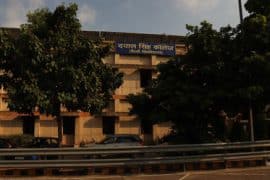Not too many students are aware of the fact that the Right to Information Act enables them to apply for the procedural details when it comes to their internal marks in Delhi University (DU) exams. Many a time, a confused student has been dismayed to find his/her internal marks appear at a disadvantage in the final mark sheet, the reason for which is normally withheld.
Section 4 of the Right to Information Act requires an authority to provide all the information to the public in the form of brochure so as to ensure the transparent working of the body. This has unfortunately been neglected by DU and finally paved the way for student Aditya Prasad to file an RTI application seeking information on the designated PIOs and about the non-implementation of the Section 4 in November 2007.
This was followed by the Central Information Commission (CIC) ordering DU to publish information to facilitate the process of accessing information as well as updating all of its online manuals, publishing copies for public reference and making sure that all the colleges do the same.
In reaction to CIC’s order, a DU official stated that “We do not think the information provided is incomplete. We will, however, have to update the manuals as per CIC’s order and ensure that the colleges comply as well.”
Most students, however, have a slightly different take on the issue and believe more transparency is needed in the whole evaluation process. According to III year student Swati Seth “One puts in a lot effort throughout the year for the internal assessment, it is extremely unfair when marks are deducted without any explanations offered. DU needs perhaps explain its process of reevaluation better”. This issue needs to be tackled by the authorities in question, failing which the students could try and use the powerful tool that is the Right to Information Act.
WHAT IS THE RIGHT TO INFORMATION ACT?
“An Act to provide for setting out the practical regime of right to information for citizens to secure access to information under the control of public authorities, in order to promote transparency and accountability in the working of every public authority…”
WHAT IT IMPLIES
Right to Information empowers every citizen to seek any information from the Government, inspect any Government documents and seek certified photocopies thereof.
WHO CAN USE IT?
Any citizen can ask for information under these laws. The Act extends to the whole of India except the State of Jammu and Kashmir.
IT INCLUDES THE RIGHT TO-
1. Inspect works, documents and records.
2. Take notes, extracts or certified copies of documents or records.
3. Take certified samples of material.
4. Obtain information in form of printouts, diskettes, floppies, tapes, video and cassettes or in any other electronic mode or through printouts.
Under Section 4(1)(d), an applicant can ask for “reasons” behind a administrative or quasi judicial decision of a public authority, especially if he is a “affected person”.
APPLICATION GUIDELINES
While filing an RTI application, the framing of the questions is very important. A slight misunderstanding or vague questions gives the PIO a chance to reject your application. Follow these guidelines to prevent mistakes:




Comments are closed.